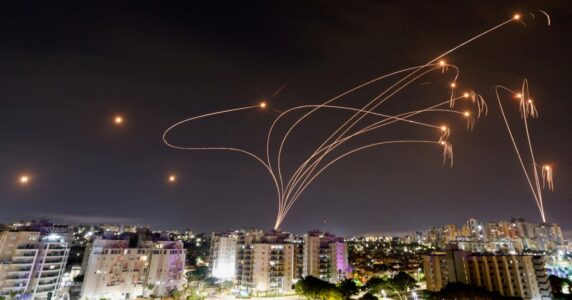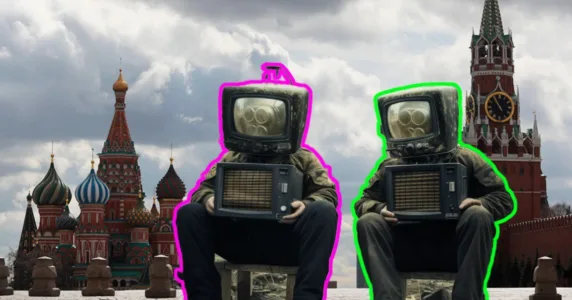Navigation and useful materials
The Kremlin is commissioning restricted polls on the support of the war in Ukraine, while remote regions of Russia are getting poorer by the day. The Centre for Strategic Communication and Information Security has collected the main fakes and narratives of the Russian propaganda of July 12.
- “Military correspondents” losing their mojo
- Putin’s supply of cannon fodder for the war in Ukraine
- Empty pockets of remote Russian regions
- Martian Chronicles of “Roscosmos”
Military correspondents” losing their mojo
During the 4.5 months of the war in Ukraine, it is becoming more and more difficult to convince Russians that it’s necessary to keep fighting.
Against the backdrop of the successes of the Ukrainian defence forces, resistance in the temporarily occupied territories, supplies of Western weapons, unprecedented international sanctions, which affected everything in Russia, from fries to the reserves of the Central Bank, it seems that even the propagandists themselves are getting tired of playing the same dusty record about the “special operation going according to the plan.” Like the entire army, they are worn out.
On July 12, the biggest story about the “liberators’” achievements was the text about an “important tank fight,” which even toddlers would struggle to believe. On the other hand, this is completely fair, considering how well the occupiers are fighting.
IN REALITY, this story, like many other fantasies published on Telegram (which has a rather young readership), just undermines any faith in Russian “military correspondents,” rather than support faith in the Russian army.
On July 12, Meduza published the results of a closed opinion poll conducted at the end of June and commissioned by Putin’s administration.
According to the results, 30% of those surveyed believe that hostilities in Ukraine should be “stopped as soon as possible.” 57% believe that the war must be continued.
Among the 18-24 age group, 56% favour ending the war, and only 19% are in favour of continuing it. Among Russians aged 25–34, 43% support the end of the war, and 41% support its continuation. The older the respondents, the greater the support. Among those aged 60 and above, 72% of the respondents spoke in favour of continuing the aggression.
There is a correlation between support of the war and media consumption. Among “active Internet users”, 47% of respondents favour ending hostilities, and only 35% support their continuation. However, among the TV audience, only 22% support ending the war, while 68% are in favour of further warfare. This is rather telling.
Putin’s supply of cannon fodder for the war
In Moscow and St. Petersburg, by the way, about 40% of respondents want the war to end, and only 48% favour its continuation. The rest of Russian territories support the war much more.
That is why residents of Moscow and St. Petersburg are not forcibly recruited. Mobilization here poses threats to the regime.
IN REALITY, much has already been written about the fact that the main suppliers of “cannon fodder” are the depressed regions of the Russian Federation. Of course, there are no open data, but a BBC research can indirectly show this information.
It was also found that:
- Of 4,515 Russian soldiers who died in Ukraine, 205 are senior officers (generals, colonels, lieutenant colonels, majors). A total of 773 people — i.e. 17% of the established dead — were officers.
- “Volunteer recruits” remain the biggest category of losses. At the end of June, at least 267 of their names are known. News about the deaths of another 30-40 “volunteer fighters” appears every week. No other category of servicemen has so many death reports.
- More than 40% of the dead “volunteer fighters” are over 45 years old (half of them — over 50). This is significantly different from the dynamics of losses among the actual military, where 47% of the established KIA are between 18 and 26 years old.
- The highest level of losses is among paratroopers. They account for 20% of deaths as of July 8.
- The list of confirmed casualties includes 162 members of the Russian Guard, including soldiers of the elite units “Vityaz”, “Rosich” and “Typhoon”, as well as at least 111 members of special forces of the GRU and three officers of the Alpha unit.
As for geography of “liberators’” burials, Dagestan remains the leader as of July 7. Its authorities and media have reported the highest number of losses from the region so far — 231 servicemen.
There is even a map with regional breakdown of Russian “cannon fodder.” It vividly demonstrates how the dictator treats his own citizens in remote regions. He clearly considers them inferior.
Empty pockets of remote regions
On July 15, an emergency meeting of the State Duma of the Russian Federation will be held, although the parliament has already been dismissed for the holidays with an instruction to the MPs from Speaker Volodin to “spend time in the Donbas.” According to forecasts, this emergency is tied to covert transition of Russian economy to a wartime mode. Putin simply does not have enough capacity to continue the war right now.
Of course, everything that happens in the State Duma will be “sold” to the population as sincere concern for their well-being and safety.
IN REALITY, Russia keeps losing money, while not lacking in ambitions. Western sanctions against banks and a boycott of Russian gold on European markets led to the bankruptcy of Petropavlovsk, one of the largest gold mining companies in Russia, which used to produce about 14 tons a year in Russia’s Far East. Russia is getting closed and closer to rock — or rather, gold, — bottom.
In addition, Petropavlovsk was one of the main sources of the regional budget. With its collapse, the hole in the budget will become even deeper. And this is the trend for the entire Russia. It is estimated that a deficit of 210 billion roubles has already formed in the budget of Russian regions. Under favourable circumstances, budgets will be balanced no earlier than 2025. Of course, the sanctions are not helping.
Russia has transferred 3.6 trillion roubles of non-returnable funds to its regions, while having collected just 3 trillion in taxes. At the same time, the deficit of the state budget itself will amount to 1.6 trillion roubles, and Moscow will simply have no money to help the regions. We wonder how Russia will be able to afford to pay the families of dead soldiers in that case.
Martian Chronicles of “Roscosmos”
On July 12, the head of Roscosmos, Rogozin, took a photo against the backdrop of the Sarmat nuclear missile, announcing that Russia was preparing for its serial production. Rogozin had a rather peculiar manner of advertising Sarmat: “A combat missile system needs no visas — it will reach the target anyway.”
Back in April, propagandist Skabeyeva and her colleague Zhuravlyov (also a member of the State Duma from the LDPR) debated on air how many seconds it would take Sarmat to reach London, Paris or Berlin.
Previously, Rogozin showed satellite images of Western “decision-making centres” and “just in case” published the coordinates of these “centres” in the USA, the UK, France, Germany and Belgium.
Europeans responded as they should. Josef Aschbacher, Director General of the European Space Agency (ESA), reported that cooperation with Roscosmos under the ExoMars mission was suspended. The reasons are the war in Ukraine and the imposed sanctions. ESA noted that they expected support for this decision from NASA.
IN REALITY, NASA has already stated that Moscow is using the ISS to support the war in Ukraine, which is completely contrary to the main task of the station — development of science and technology for peaceful purposes. (We remind you that Russian cosmonauts unfurled the flag of the so-called “LPR” on the station)
In response, Rogozin complained that the US was the first to abandon the principle of “space stays out of politics”, depriving Russia of access to the international microelectronics market and commercial orders.
Now, Rogozin has broken up with the Europeans, accusing them of supporting the “Kyiv junta”. In protest, he even ordered the Russian cosmonauts to “stop working with the European manipulator ERA” and promised to return the landing Mars module “Kazachok” “home.”
But Rogozin cannot return the module, located on the territory of Thales Alenia Space in the Italian Turin, because of the flight ban.
“It is not difficult to make another Kazachok landing module, which we developed as part of the ExoMars mission. We have all the blueprints; this is our work,” brags Rogozin. Indeed, the one small problem is finding the electronics affected by sanctions.
When, after the start of the war, Washington and the EU began to implement said sanctions, Rogozin was offended and said that the USA should now fly on “its own brooms”, and that the supply of “Russian rocket engines, the best in the world, is now suspended.”
However, the US stopped buying engines (Soviet ones actually) last year due to the availability of a better alternative: Jeff Bezos’ Blue Origin’s BE-4 and Elon Musk’s SpaceX’s Raptor.
Another problem with assembling “the best Russian engines” is that the machines used for production of their parts are German: Hurco, Aicon, Siemens, DMG Mori.
Interestingly, until recently, Roscosmos worked using 1932 machines, received from the post-war Germany as reparations.
So that’s the whole story. The inglorious end of Putin’s “Space Odyssey is imminent. And if Moscow continues its current politics, there is no improvement in sight.
If you have found a spelling error, please, notify us by selecting that text and pressing Ctrl+Enter.



